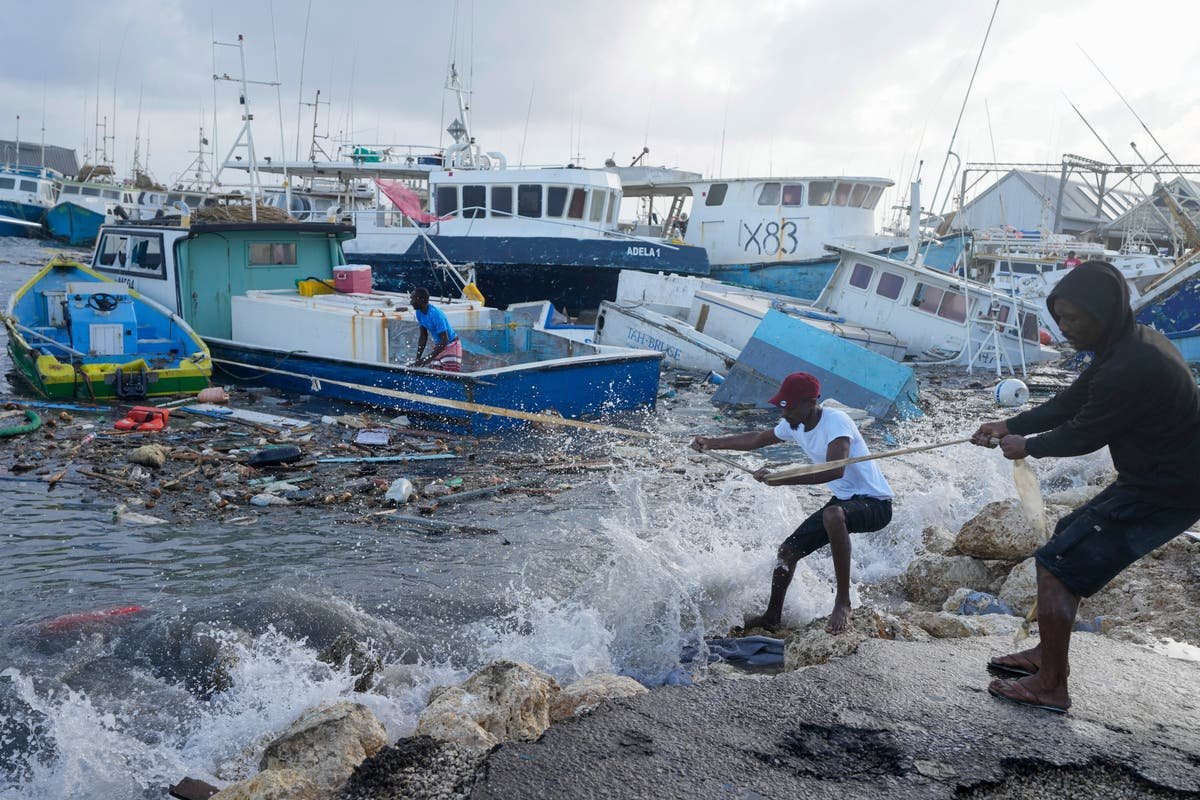Hurricane Beryl’s Impact on Jamaica

Jamaica beryl hurricane – Hurricane Beryl, a Category 1 hurricane, made landfall in Jamaica on July 5, 2023, bringing heavy rains, strong winds, and storm surges. The hurricane caused significant damage to the island’s infrastructure, housing, and environment.
Impact on Infrastructure, Jamaica beryl hurricane
Hurricane Beryl caused widespread damage to Jamaica’s infrastructure. Roads were flooded and impassable, bridges were washed out, and power lines were downed. The hurricane also damaged several schools, hospitals, and other public buildings.
The tempestuous Jamaica Beryl hurricane had ravaged the island, leaving a trail of destruction in its wake. As the storm subsided, residents emerged from their shelters, their spirits dampened by the aftermath. In a peculiar turn of events, amidst the wreckage, a glimmer of humor emerged.
A local dog, with its matted fur and protruding tongue, seemed to mirror the devastation, sparking a spontaneous contest that would have rivaled the world ugliest dog contest. The hurricane’s fury had inadvertently brought a moment of levity to the somber aftermath.
- Roads and bridges: Many roads and bridges were damaged or destroyed by the hurricane, making it difficult for people to travel and for emergency responders to reach affected areas.
- Power outages: The hurricane caused widespread power outages, leaving many people without electricity for days or even weeks.
- Water shortages: The hurricane also caused water shortages, as many water treatment plants were damaged or lost power.
Impact on Housing
Hurricane Beryl also caused significant damage to housing in Jamaica. Many homes were destroyed or damaged, leaving thousands of people homeless. The hurricane also caused flooding, which damaged or destroyed many homes.
The Jamaica Beryl hurricane has been making its way across the Caribbean, leaving a trail of destruction in its wake. As the storm approaches Florida, Governor DeSantis has vetoes a bill that would have provided funding for hurricane relief. This decision has been met with criticism from some, who argue that it will leave the state unprepared for the storm.
However, DeSantis maintains that the state has sufficient resources to respond to the hurricane.
- Home damage: The hurricane caused widespread damage to homes, with many homes being destroyed or severely damaged.
- Homelessness: The hurricane left thousands of people homeless, as many homes were destroyed or damaged beyond repair.
- Flooding: The hurricane also caused flooding, which damaged or destroyed many homes.
Impact on the Environment
Hurricane Beryl also had a significant impact on the environment in Jamaica. The hurricane caused flooding, which damaged or destroyed many forests and wetlands. The hurricane also caused erosion, which damaged or destroyed many beaches and coastal areas.
- Flooding: The hurricane caused flooding, which damaged or destroyed many forests and wetlands.
- Erosion: The hurricane also caused erosion, which damaged or destroyed many beaches and coastal areas.
- Deforestation: The hurricane caused deforestation, as many trees were uprooted or damaged by the strong winds.
Jamaica’s Response to Hurricane Beryl

In the aftermath of Hurricane Beryl, the Jamaican government and aid organizations swiftly mobilized to provide immediate assistance to affected communities. Emergency shelters were established, food and water were distributed, and medical teams were deployed to provide healthcare services.
Long-Term Recovery and Rebuilding Plans
Following the immediate response efforts, the Jamaican government implemented a comprehensive recovery and rebuilding plan. This plan included measures to repair damaged infrastructure, provide financial assistance to affected businesses and individuals, and support the reconstruction of homes and livelihoods.
Challenges and Lessons Learned
The response and recovery process faced several challenges, including limited resources, logistical difficulties, and the need to coordinate the efforts of multiple organizations. However, the Jamaican government and aid organizations worked together effectively to overcome these challenges and provide essential support to affected communities.
The experience of Hurricane Beryl also highlighted the importance of preparedness and resilience. The Jamaican government has since implemented measures to strengthen its disaster management capabilities, including investing in early warning systems and community-based disaster preparedness programs.
Historical Context of Hurricanes in Jamaica: Jamaica Beryl Hurricane

Jamaica, located in the hurricane-prone Caribbean region, has experienced numerous hurricanes throughout its history. These storms have had significant impacts on the island’s infrastructure, economy, and society.
Notable hurricanes that have impacted Jamaica include Hurricane Gilbert in 1988, which caused widespread damage and loss of life, and Hurricane Ivan in 2004, which was one of the most powerful hurricanes to hit the island in recorded history.
Severity and Impact of Hurricane Beryl
Compared to other notable hurricanes, Hurricane Beryl was a relatively weak storm. However, it still caused significant damage to Jamaica, particularly in the eastern parishes of Portland and St. Thomas.
The heavy rainfall associated with Hurricane Beryl triggered landslides and flooding, which damaged roads, bridges, and homes. The storm also caused power outages and disruptions to water supply.
Patterns and Trends in Hurricane Activity
Jamaica is located in the Atlantic hurricane belt, which experiences an average of 12 tropical storms and six hurricanes each year. The peak hurricane season in Jamaica runs from June to November.
In recent years, there has been an increase in the frequency and intensity of hurricanes in the Caribbean region. This is partly due to climate change, which is causing sea levels to rise and ocean temperatures to increase.